Scroll Down to Read Today’s Essay
Subscribe to Baseball History Comes Alive for automatic updates. As a Free Bonus, you’ll get instant access to my Special Report: Gary’s Handy Dandy World Series Reference Guide!
Ralph Kiner Photo Gallery
Click on any image below to see photos in full size and to start Photo Gallery:
Today Bill Schaefer returns with a long-overdue tribute to slugger Ralph Kiner. If you ever had any doubts that Kiner is a legitimate Hall of Famer, as I once did, I think you’ll be in for a surprise. Bill makes the case for Kiner’s enshrinement in no uncertain terms. Read Bill’s essay and see if you agree: Ralph Kiner belongs in the Hall of Fame. -GL
SLUGGER TURNED MALAPROP MAESTRO: RALPH KINER
A strange thing happened when the obstetrician gave Ralph McPherran Kiner the spank of life, administered to his tiny bottom, on October 27, 1922, in Santa Rita, New Mexico. The doctor swears he heard the infant, reacting to the slap, scream, “Homerun!!” Now, that story may be apocryphal but the utterance would certainly be accurate in describing Ralph Kiner’s meteoric baseball career.
His mom was a World War I nurse from Oregon and his dad, Ralph Maklin Kiner, was a baker. The genes lined up nicely to produce a fine broth of a boy who signed with the Pittsburgh Pirates as soon as he graduated from Alhambra High (near Los Angeles). After a couple of years in the Class A Eastern League, he spent World War II as a Navy pilot before joining the Pirates for spring training in 1946.

♫”He hits the long ball, he hits the long ball…not the single, not the double, not the triple but the…looong ball”♫
At 6′ 2″, 195 pounds, the formidable left fielder was being hyped as a phenom. But the 23-year-old got off to a wobbly start, batting .184 in April. As the shocking bikini bathing suit was being introduced in July in Paris, however, Kiner was gaining traction with 17 homers and a more respectable batting average.
At season’s end, the personable rookie topped the National League with 23 round-trippers, but Ralph batted only .247 with 109 strikeouts (the only year he would whiff 100 times or more). And the young slugger admitted his first homerun crown was a fluke,
“The Giants’ Johnny Mize finished with 22 but missed a lot of the second half with a broken toe in July and a few weeks later he broke his wrist.”
Kiner and Mize tied in 1947 (Pirate attendance increased 71%) and 1948, with 51 and 40 homers respectively. For three consecutive years, the two power hitters were separated by a single homerun.
As recently as five years ago I was adamant about Kiner not being in the Hall of Fame. I reasoned,
“Durocher said a superstar is a five-tool player: Run, throw, field, hit, and hit with power. Kiner was slow afoot with a mediocre arm and was only an adequate fielder. Plus, his lifetime batting average was only .279.”
But let’s take a look at some numbers that jump off the page:
- Ralph won or tied with seven straight home run titles from 1946-1952 (he also tied Hank Sauer in 1952, with 37 circuit clouts). Even the great Bambino never did that.
- When you eliminate the steroid users, Kiner ranks fourth all-time in homerun percentage. Here are the top seven: Babe Ruth-8.50, Jim Thome-7.27, Giancarlo Stanton-7.22, Ralph Kiner-7.09, Harmon Kilebrew-7.03, Mike Trout-6.87, Ted Williams-6.76.
- The most comprehensive statistic in measuring a hitter’s worth is his on-base percentage combined with slugging percentage (OPS). An adjusted OPS (OPS+) of 100 is average. If the batter rates a 110 OPS+, he’s 10% better than the average player of his playing era. Kiner had a lifetime 149 OPS+. That puts him in an elite category, topping Mike Schmidt, Vladimir Guerrero, and Albert Pujols.
- He hit four home runs in four consecutive at-bats over two games twice.
- Kiner was the first in the National League to hit 50 four-baggers twice (51, 54). Ruth and Foxx did it in the American League.
- He also led the league in walks, slugging average, OPS, and OPS+ three times each; RBIs, on-base percentage, total bases, and runs one time each.
The great Hank Greenberg joined the Pirates in 1947 for a final year in his Hall of Fame career and was a wonderful mentor to Kiner,
“Hank gave me confidence and taught me to pull the ball. He also pointed out the importance of “zoning” a pitch. Make the pitch be in a certain spot early in the count, up to two strikes. Don’t swing if it isn’t there. But you’ll be ready if you get it.”
To accommodate Greenberg, they moved in the cavernous Forbes Field fences: from 365 feet. down the left field line to 335 feet with a bullpen, calling it Greenberg Gardens. And the left-center power alley went from 406 feet to 376 feet. By the end of the season, the writers were calling the bullpen area “Kiner’s Korner.” Although 335 feet. was still an above-average ballpark distance, critics were bleating that if Ralph were to break Ruth’s record, it would be tainted.
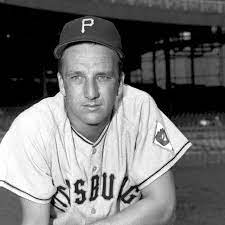
Pirate minority owner, Bing Crosby, introduced the handsome slugger to his Hollywood friends. Kiner hung with Sinatra, dated Janet Leigh, and escorted 17-year-old Elizabeth Taylor to a movie premiere. But in 1951 he married 22-year-old tennis star Nancy Chaffee (they had three children).
By 1952, the powerfully built athlete was making a whopping $90,000 a season (“Homerun hitters drive Cadillacs”), which was gnawing at the penurious Pittsburgh general manager, Branch Rickey. The brilliant skinflint docked Kiner 15K in 1953, and when Ralph complained, the Mahatma responded, “Son, we can finish last without you.” Kiner was traded in June to the Cubs and had a good year with 35 homers and 116 RBI, but by 1955 his chronic back ailments were just too painful. Kiner retired as a player at age 32, after only 10 years in the major leagues.
“Wecome to Kiner’s Korner, I’m Ralph Korner!”
A general manager position immediately beckoned from the then-Pacific Coast League San Diego Padres, and Kiner got his feet wet doing baseball play-by-play, “I couldn’t afford to hire an announcer.” In 1962, he joined Lindsay Nelson and Bob Murphy in the TV booth for the brand new New York Metropolitan baseball team, “They knew I was familiar with losing.” The trio stayed together for 17 years. He was an immediate hit with his easygoing, insightful presentation. And listening to a tape of a rare radio play-by-play in 1962, I was amazed at Ralph’s smooth proficiency.
But he was inclined to charmingly butcher the language with malapropisms and “Kinerisms”:
“Tony Gwynn has been named player of the year for April.”
“There’s a lot of heredity in that family.”
“Solo homers usually come with no one on base.”
“On Father’s Day, we wish you all happy birthday”
“Now up to bat for the Mets is Gary Cooper.” Gary Carter wasn’t offended.
Tim McCarver, his TV partner for 16 years recalled, “He was supposed to introduce a pitching change with ‘Brought to you by American Cyanamid.’ But instead, it came out American Cyanide.”
Here’s one, though, that can only be classified as classic, “Two-thirds of the earth is covered by water, the other third is covered by Gary Maddox,” referring to the fleet-footed centerfielder.
Mets ownership was smart to keep Kiner long after he suffered from Bell’s palsy, which caused a slightly slurred speech. His workload was decreased and Ralph carried on without a hitch. Mets announcer extraordinaire Gary Cohen observed, “No one who was ever in a room with him was ever uncomfortable.”
He was voted into the Hall of Fame in 1975, the final year of his eligibility, topping the 75% required by a single vote. Per 162 games, Kiner averaged 41 home runs and 112 RBIs for his career.
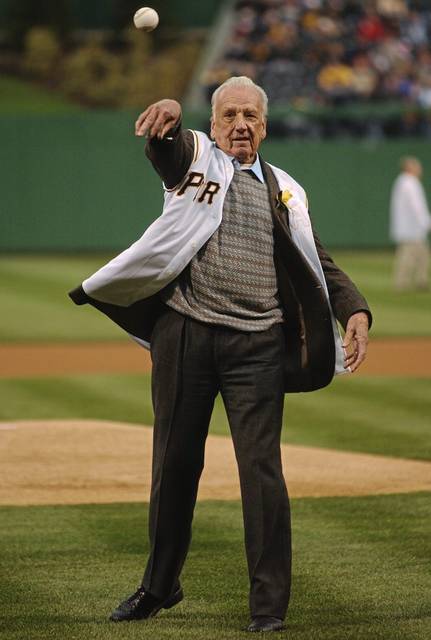
We lost the charismatic outfielder at 91, in 2014. He might be best remembered by another Gary Cohen statement,
“All I can tell you is that there was no time that he worked a game when we didn’t think it was the best day of the week.”
Bill Schaefer
References: NY Times, 2/6/14, Richard Sandomir; SABR, Ralph Kiner, Warren Corbett; Baseball reference; Wikipedia page, Ralph Kiner; online Kiner quotations.
Subscribe to our website, “Baseball History Comes Alive!” with over 1400 fully categorized baseball essays and photo galleries, now surpassing the one million hits mark with 1.025M hits and over 850 subscribers: https://wp.me/P7a04E-2he
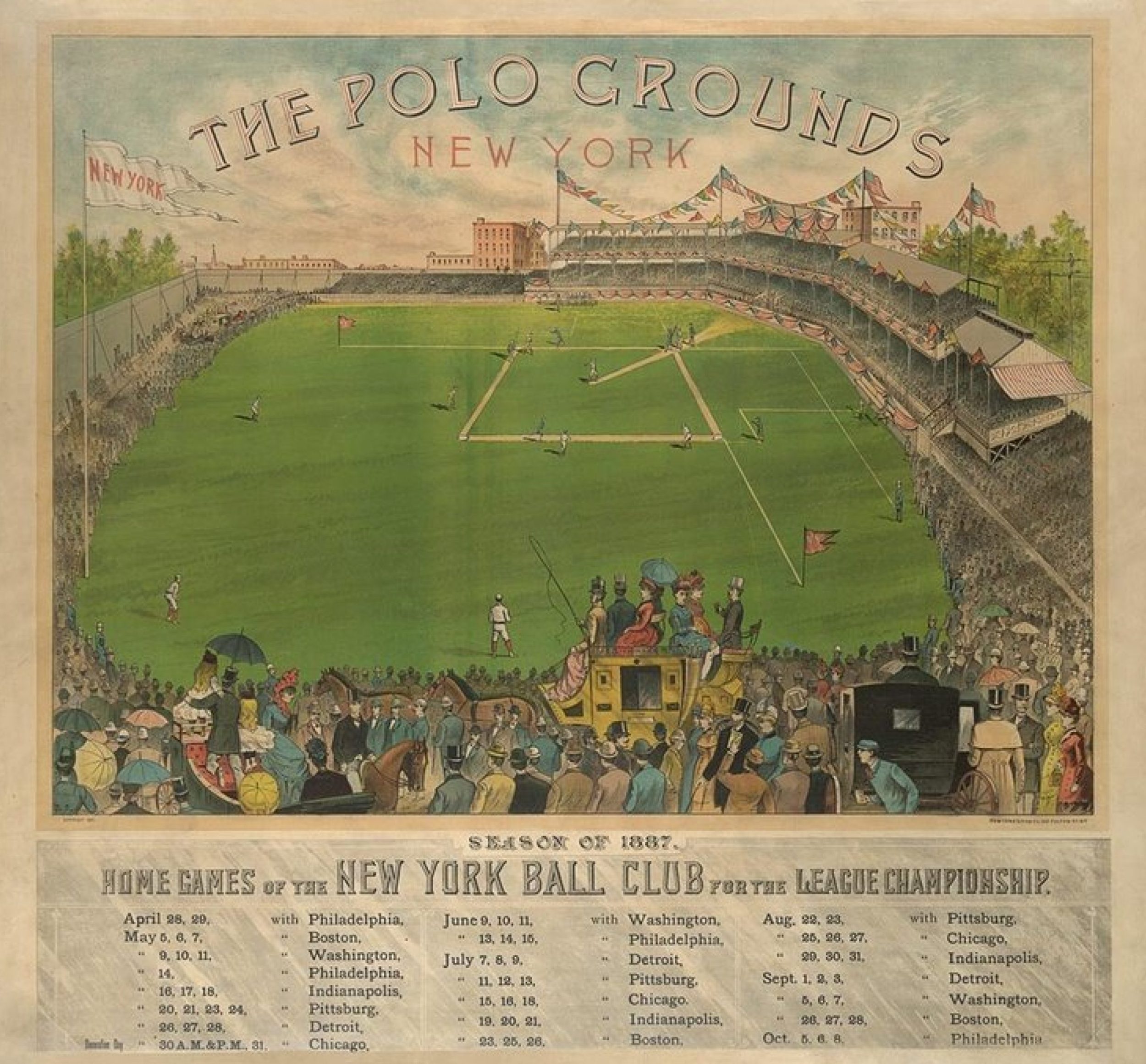
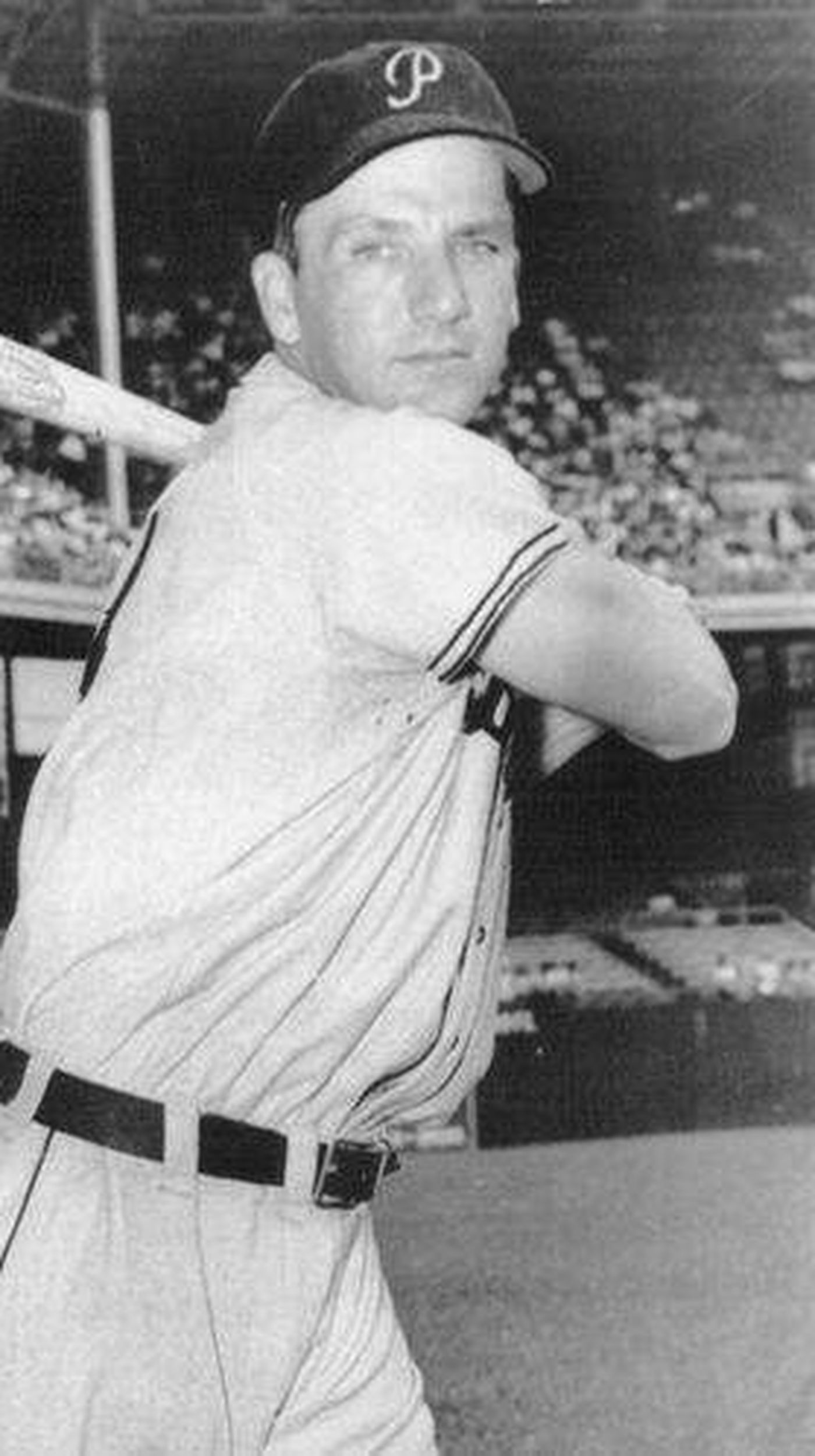
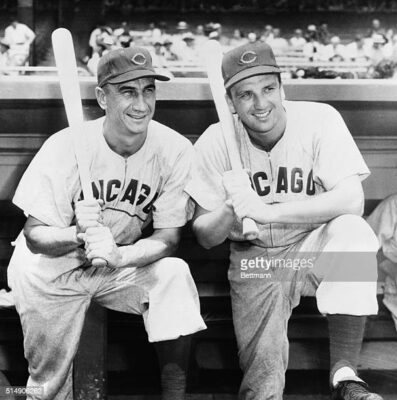
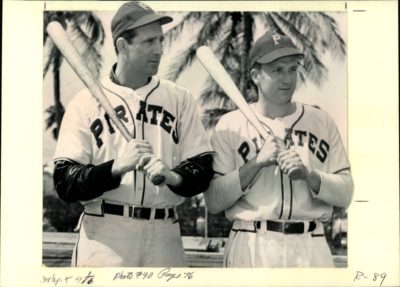
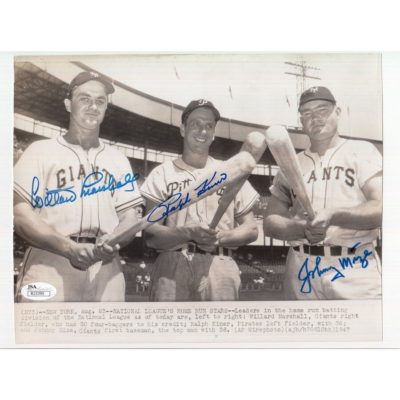
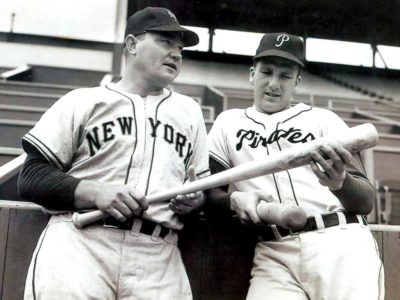
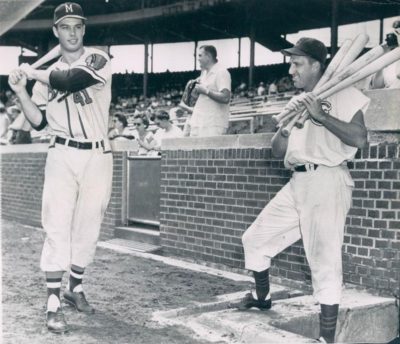
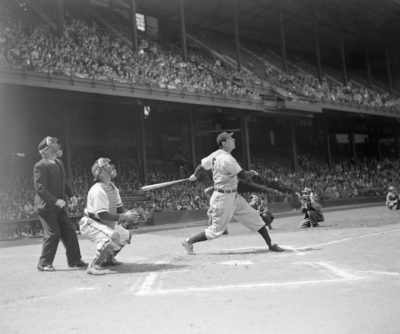
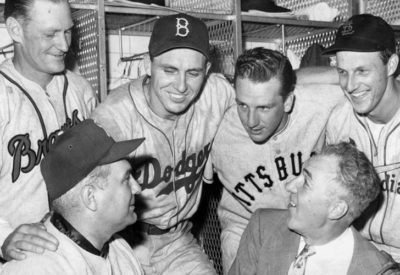
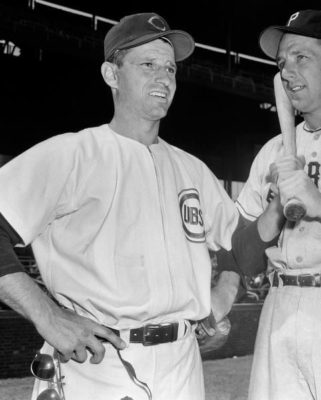
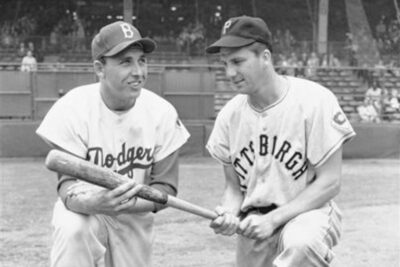
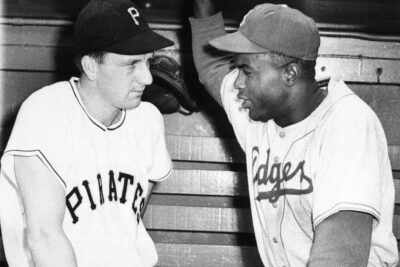
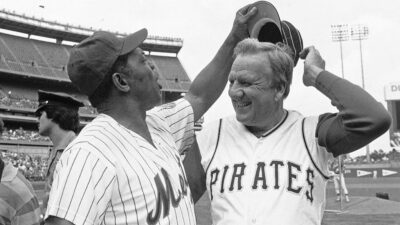
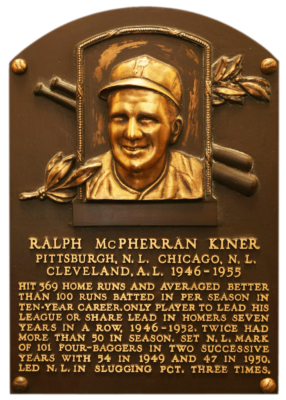
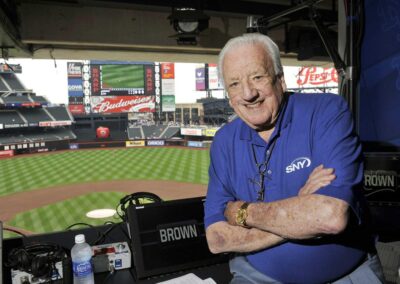
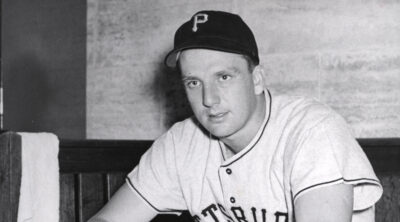
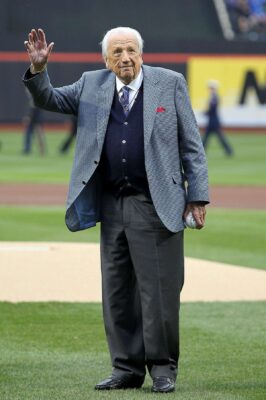
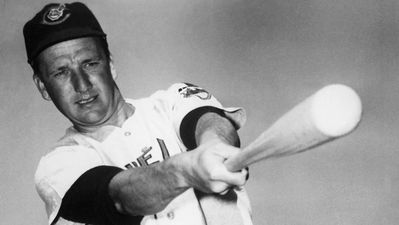

Growing up in Long Island in the 1960s, I’d hear Ralph Kiner on the Mets broadcasts with Lindsey Nelson and Bob Murphy. I was spoiled and didn’t know it. I was also ignorant of Kiner’s history, not knowing of his home-run-hitting prowess or his dating of many glamorous Hollywood starlets.
When I learned of it, my first reaction was, “That guy? Really?” Once I got past the astonishment, I had a newfound respect for Kiner. He no longer was the amiable bumbling announcer; he was a former star who had the credentials to be there.
Since learning of his experiences in the 1950s, Kiner has become one of my favorites. The man lived an apparently incredible life. It deserves recognition as such.
Thanks George, that’s well said!
After every Met telecast, starting in 1962, I always looked forward to the great postgame show, “Kiner’s Korner!” Classic. I still have a Mets program signed by Ralph in August of ’63 (Met-Dodger doubleheader in the Polo Grounds last year). I walked up to the broadcaster booth and Kiner gladly signed it! My Dad told me to give it a shot. Pop was always right.
A great article for a great ballplayer. I remember him when I was kid going to Shea Stadium. He was always a gentleman and very kind to us kids. It would have been nice to see him teamed up with Yogi Berra calling a baseball game and the quotes that would have arisen. He deserves the Hall just as much as anyone. God Bless you Ralph.
We all appreciate affectionate and supportive tributes like this, esp. when they include not only informative statistics, but so many personal insights. Thanks, Bill.
My question for our esteemed author: In the past five years, what was it about Dr. Korner’s playing career that persuaded you he was more than a one-tool bomber?
A legitimate Hall-of-Famer or not, Ralph Kiner was quite the guy. Not much doubt about that.
Regards,
Michael
Kiner may be the only member of the HOF who was born in what is now a ghost town. For years I sought Santa Rita, N.M., on maps with no success. Finally, I found this in Wikipedia: “Santa Rita is a ghost town in Grant County in the U.S. state of New Mexico. The site of Chino copper mine, Santa Rita was located fifteen miles east of Silver City. “
It was probably the New Mexico connection that got him in.
Michael
Alamogordo
Great essay. Being a Yankee fan, I only occasionally watched a Met game but I always appreciated Kiner’s goofy charm as an announcer. He certainly was a tremendous player. I didn’t realize that his career was so short which of course depressed some his lifetime stats.
Just back from Mystic Island, NJ, and appreciate the varied comments from you guys.
Not 100% sold on Ralph for the Hall, MK and Ken, but his “one tool” was so prolific…plus his contribution to our entertainment through the microphone is absolutely worth consideration and I’m glad he was voted in.
Right, Steve, when you consider Kiner was basically finished at 30 with two mediocre years tacked on because of his bad back, you have to wonder what seven or eight more completely healthy years would have produced.
Love the booth story, Monte, Kiner was a good guy to be sure!